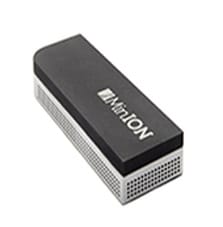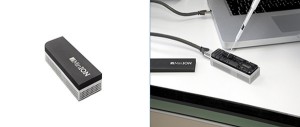MinION Sequencer Reproducibility Tested in Depth by Five Labs

 Researchers from five labs have tested in depth the performance of the MinION, the sequencer developed by Oxford Nanopore. The labs belong to the MinION Analysis and Reference Consortium (MARC), a subgroup of the MinION Access Program (MAP) that gave early access to the device to several researchers around the world. The MARC participants conducted equivalent experiments in labs located in different continents, and tested the yield, accuracy and reproducibility of the small sequencer. The researchers found variability in the quality of flow cells, but results for flow cells with high number of active pores were comparable. The results were published in the journal F1000Research.
Researchers from five labs have tested in depth the performance of the MinION, the sequencer developed by Oxford Nanopore. The labs belong to the MinION Analysis and Reference Consortium (MARC), a subgroup of the MinION Access Program (MAP) that gave early access to the device to several researchers around the world. The MARC participants conducted equivalent experiments in labs located in different continents, and tested the yield, accuracy and reproducibility of the small sequencer. The researchers found variability in the quality of flow cells, but results for flow cells with high number of active pores were comparable. The results were published in the journal F1000Research.
The MinION is the smallest high-throughput sequencer in the market, with the ability to sequence single DNA molecules with a single-use flow cell. Each flow cell has 512 channels, allowing simultaneous sequencing of 512 DNA molecules that pass through the nanopores contained in the channels. The nanopores are embedded in a membrane, and DNA passes through the nanopore, one base at a time, altering the electrical voltage applied to the membrane. A sensor reads the electrical output of each 5 contiguous bases, which is characteristic of each combination of bases, allowing identification of all bases.
Testing two kinds of kits and protocols
Oxford Nanopore released recently a new kind of flow cells, the R7+. All research groups using the R7+ flow cells were satisfied with the results, but they detected varying outcomes. It was difficult to identify the sources of variation, so they decided to carry out the same sequencing experiment in different labs, and assess the sequencer’s reproducibility, accuracy and yield. The MARC Phase 1a experiments consisted in sequencing, in duplicate, the E. coli strain K-12 substrain MG1655. All labs followed the same protocol for bacteria culture, DNA extraction, library preparation and sequencing. During the Phase 1a, a new kit and protocol was released, so another dataset was obtained following the new procedures, in a process that constituted the Phase 1b. According to the results obtained, several factors can influence the reproducibility of sequencing depending on the site.
Data reproducibility is affected by flow cell quality and local factors
In total, the 5 labs from the MARC generated 20 datasets, and shown a variability in the quality of the flow cells. However, for flow cells with a similar number of active pores, the results were similar in yield, quality and accuracy. An important source of variability was the quality of reagents and materials, stochastic variation in applying the protocols and computer problems during a run. Every lab has a characteristic way of doing things, even when following an identical protocol, and that is reflected in the variability. All these factors affected reproducibility, but not data quality, with the exception of fuel mix addition, which caused poor base quality and short reads if loaded in high concentrations. Forced restart scripts was the highest source of variation among the 20 datasets, altering drastically the run length and yield.
The general performance of the MinION was consistent, and the highest source of variation is the initial number of pores in the flow cells. The base quality of an experiment may depend on human or equipment-related conditions in a particular lab, as well as on the shipping of the devide. The performance could be improved with clearer protocol steps, specially software steps. Improvements in methods of molecule delivery to the flow cell, run scripts and base-call accuracy could also help.
Source: genomeweb
